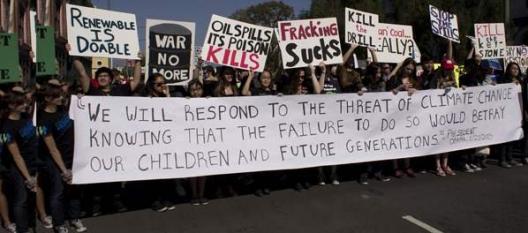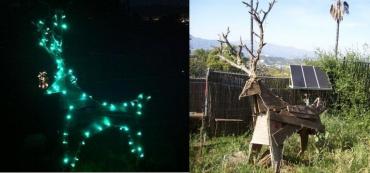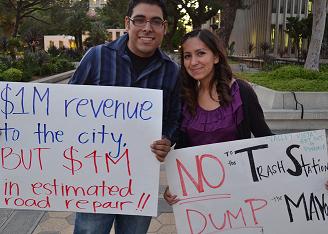| About Us | Contact Us | Calendar | Publish | RSS |
|---|
|
Features • latest news • best of news • syndication • commentary Feature Categories IMC Network:
Original Citieswww.indymedia.org africa: ambazonia canarias estrecho / madiaq kenya nigeria south africa canada: hamilton london, ontario maritimes montreal ontario ottawa quebec thunder bay vancouver victoria windsor winnipeg east asia: burma jakarta japan korea manila qc europe: abruzzo alacant andorra antwerpen armenia athens austria barcelona belarus belgium belgrade bristol brussels bulgaria calabria croatia cyprus emilia-romagna estrecho / madiaq euskal herria galiza germany grenoble hungary ireland istanbul italy la plana liege liguria lille linksunten lombardia london madrid malta marseille nantes napoli netherlands nice northern england norway oost-vlaanderen paris/Île-de-france patras piemonte poland portugal roma romania russia saint-petersburg scotland sverige switzerland thessaloniki torun toscana toulouse ukraine united kingdom valencia latin america: argentina bolivia chiapas chile chile sur cmi brasil colombia ecuador mexico peru puerto rico qollasuyu rosario santiago tijuana uruguay valparaiso venezuela venezuela oceania: adelaide aotearoa brisbane burma darwin jakarta manila melbourne perth qc sydney south asia: india mumbai united states: arizona arkansas asheville atlanta austin baltimore big muddy binghamton boston buffalo charlottesville chicago cleveland colorado columbus dc hawaii houston hudson mohawk kansas city la madison maine miami michigan milwaukee minneapolis/st. paul new hampshire new jersey new mexico new orleans north carolina north texas nyc oklahoma philadelphia pittsburgh portland richmond rochester rogue valley saint louis san diego san francisco san francisco bay area santa barbara santa cruz, ca sarasota seattle tampa bay tennessee urbana-champaign vermont western mass worcester west asia: armenia beirut israel palestine process: fbi/legal updates mailing lists process & imc docs tech volunteer projects: print radio satellite tv video regions: oceania united states topics: biotechSurviving Citieswww.indymedia.org africa: canada: quebec east asia: japan europe: athens barcelona belgium bristol brussels cyprus germany grenoble ireland istanbul lille linksunten nantes netherlands norway portugal united kingdom latin america: argentina cmi brasil rosario oceania: aotearoa united states: austin big muddy binghamton boston chicago columbus la michigan nyc portland rochester saint louis san diego san francisco bay area santa cruz, ca tennessee urbana-champaign worcester west asia: palestine process: fbi/legal updates process & imc docs projects: radio satellite tv |
Environment:
previous page 4 next page |
single feature archives |
weekly archives
On Sunday, a crowd of around one thousand progressive environmental demonstrators met at Paseo de la Plaza on Olvera Street and marched to Los Angeles's city hall. The protest was in solid opposition to the Keystone XL pipeline whose fate will be decided by Barack Obama in the near future. The keystone XL is an extension pipeline that will go from the Athabasca oil sands in Canada to the Texan Gulf of Mexico. It's purpose is to provide oil to the Southwestern United States from the oil sands and bringing the U.S. a greater level of "oil Independence."
The environmental impacts are somewhat myriad yet each and every one of those scenarios could prove to be extreme in its destruction of aquifers and wetlands, along with animal, plant and human populations. The Ogallala Aquifer, which lies beneath the great plains of the U.S. and supplies 30 percent of U.S. irrigation water, would be devastated if a pipeline broke and contaminated the shallow water supply with benzine. Benzine is a component of the dilute bitumen, which is flowing through the pipeline. The Keystone XL will carry 830,000 barrels per day. During the rally portion of Sunday's event, a show of hands revealed that a large majority of participants got there via public transportation, bicycling/walking, or electric/hybrid vehicles. Grandmother Gloria Arellanes of the Tongva people gave an opening prayer; Ed Begley, Jr. hosted; and there were a lot of good speakers and entertainers. Article & photos: Shut It Down, Mr. President part 1 | Shut It Down, Mr. President part 2 by Robert Stuart Lowden More coverage: L.A. Participates in Protesting the Keystone XL Pipeline (part 1) | L.A. Participates in Protesting the Keystone XL Pipeline (part 2) by Ross Plesset Indymedia on Air: discussion on KPFK (available for 90 days)
Demonstrations have occurred in 46 cities around the world. The message to the International Olympic Committee: don't award the 2020 Olympics to Japan. The cruel dolphin drives in Taiji serve Japan's meat industry and provide slave entertainment to marine parks worldwide.
The Japanese people are not the target. This problem was kept secret from them for a long time (the Oscar-winning documentary the Cove got very little exposure in Japan)--but now, many of them are protesting, too. Yesterday in Los Angeles, a protest and awareness-building campaign was held outside the Japanese Consulate on Grand Avenue in downtown. Fancy flyers were distributed, petitions circulated (four pages of them got signed), and there was plenty of chanting. Article and photos: Drawing Attention to Dolphin Slaughter, Japan, and the 2020 Olympics | Dolphin Slaughter, Japan, and the 2020 Olympics (part 2) by Ross Plesset
In Echo Park, a solar panel was used to power an incandescent reindeer and other Xmas lights. The store-bought panel was connected to batteries, which were charged during the day and expended at night. (This panel has also been used to power a laptop computer and other devices.)
Pictures: Solar-Powered Xmas Lights in NELA by RP Monday, October 15, 2012
POMONA - The community organization United Voices of Pomona continued its protest against the approved waste transfer station, and added to its demands the mayor's resignation. The Los Angeles district attorney filed charges filed against one of Mayor Rothman's donors, alleging that Alfredo Solis, the owner of Western Recycling, had laundered $15,000 in contributions to Rothman's 2008 mayoral campaign through acquaintances. This latest scandal propelled the United Voices to demand Rothman's resignation, declaring, "we don't want trash money running our city." Full story: United Voices of Pomona Demands Mayor's Resignation by Rockero, photos by Tony Hoang
Nuclear power plants generate heat by bombarding "fissile" atoms (such as uranium-235) with neutrons. When the atoms are split, more neutrons are released, which then split other uranium atoms in a sustained "chain reaction." The heat energy released by this process is used to boil water to produce steam to turn a turbine which produces electricity.
The process is inherently dangerous, inherently dirty, and inherently very profitable -- if you don't have to pay the additional costs of: Accidents, cancers from routine releases, or the safe storage of the nuclear waste stream for thousands upon thousands of years. However, somebody will have to pay all these costs. Catastrophic, globally-impacting accidents are inevitable, as the world has seen four times in the last three decades: Three times in Fukushima and once in Chernobyl, with many "near-misses," many of which have been hidden from public scrutiny, and countless less serious -- but still very serious -- smaller accidents. Since the day in January that San Onofre sprung a leak, the station's owner/operators, Southern California Edison, have tried to come up with a plan to "safely" restart the reactor. Of course, they can never be operated safely, because many more things than just the steam generators can break catastrophically at a nuclear power plant, but ignoring that fact, as SCE does, SCE wants to at least run one of the reactors -- not the one that sprung a leak, that one's trashed -- at partial power, so they can make some money and, perhaps just as important to them, avoid an investigation by the CPUC of what went wrong (the CPUC has been so supportive of SCE's "need" to make a profit from San Onofre, that perhaps this was not a major concern, but it is always possible that an investigation would reveal something). Full story: San Onofre doesn't have to become our Fukushima by Ace Hoffman Environment: previous page 4 next page | single feature archives | weekly archives |



 Shut It Down, Mr. President
Shut It Down, Mr. President Drawing Attention to Dolphin Slaughter, Japan, and the 2020 Olympics
Drawing Attention to Dolphin Slaughter, Japan, and the 2020 Olympics Solar-Powered Xmas Lights in NELA
Solar-Powered Xmas Lights in NELA United Voices of Pomona Demands Mayor's Resignation
United Voices of Pomona Demands Mayor's Resignation San Onofre doesn't have to become our Fukushima
San Onofre doesn't have to become our Fukushima